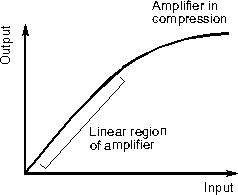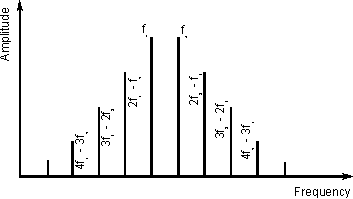Products Category
- FM Transmitter
- 0-50w 50w-1000w 2kw-10kw 10kw+
- TV Transmitter
- 0-50w 50-1kw 2kw-10kw
- FM Antenna
- TV Antenna
- Antenna Accessory
- Cable Connector Power Splitter Dummy Load
- RF Transistor
- Power Supply
- Audio Equipments
- DTV Front End Equipment
- Link System
- STL system Microwave Link system
- FM Radio
- Power Meter
- Other Products
- Special for Coronavirus
Products Tags
Fmuser Sites
- es.fmuser.net
- it.fmuser.net
- fr.fmuser.net
- de.fmuser.net
- af.fmuser.net ->Afrikaans
- sq.fmuser.net ->Albanian
- ar.fmuser.net ->Arabic
- hy.fmuser.net ->Armenian
- az.fmuser.net ->Azerbaijani
- eu.fmuser.net ->Basque
- be.fmuser.net ->Belarusian
- bg.fmuser.net ->Bulgarian
- ca.fmuser.net ->Catalan
- zh-CN.fmuser.net ->Chinese (Simplified)
- zh-TW.fmuser.net ->Chinese (Traditional)
- hr.fmuser.net ->Croatian
- cs.fmuser.net ->Czech
- da.fmuser.net ->Danish
- nl.fmuser.net ->Dutch
- et.fmuser.net ->Estonian
- tl.fmuser.net ->Filipino
- fi.fmuser.net ->Finnish
- fr.fmuser.net ->French
- gl.fmuser.net ->Galician
- ka.fmuser.net ->Georgian
- de.fmuser.net ->German
- el.fmuser.net ->Greek
- ht.fmuser.net ->Haitian Creole
- iw.fmuser.net ->Hebrew
- hi.fmuser.net ->Hindi
- hu.fmuser.net ->Hungarian
- is.fmuser.net ->Icelandic
- id.fmuser.net ->Indonesian
- ga.fmuser.net ->Irish
- it.fmuser.net ->Italian
- ja.fmuser.net ->Japanese
- ko.fmuser.net ->Korean
- lv.fmuser.net ->Latvian
- lt.fmuser.net ->Lithuanian
- mk.fmuser.net ->Macedonian
- ms.fmuser.net ->Malay
- mt.fmuser.net ->Maltese
- no.fmuser.net ->Norwegian
- fa.fmuser.net ->Persian
- pl.fmuser.net ->Polish
- pt.fmuser.net ->Portuguese
- ro.fmuser.net ->Romanian
- ru.fmuser.net ->Russian
- sr.fmuser.net ->Serbian
- sk.fmuser.net ->Slovak
- sl.fmuser.net ->Slovenian
- es.fmuser.net ->Spanish
- sw.fmuser.net ->Swahili
- sv.fmuser.net ->Swedish
- th.fmuser.net ->Thai
- tr.fmuser.net ->Turkish
- uk.fmuser.net ->Ukrainian
- ur.fmuser.net ->Urdu
- vi.fmuser.net ->Vietnamese
- cy.fmuser.net ->Welsh
- yi.fmuser.net ->Yiddish
What is Radio Receiver Dynamic Range?
- overview or tutorial of the basics of radio receiver dynamic range performance used for specifying the performance of radio receivers used in radio communications systems.
Sensitivity is one of the main specifications of any radio receiver. However the sensitivity of a set is by no means the whole story. The specification for a set may show it to have an exceedingly good level of sensitivity, but when it is connected to an antenna its performance may be very disappointing because it is easily overloaded when strong signals are present, and this may impair its ability to receive weak signals. In today's radio communications environment where there are very many transmitters close by and further away, good levels of sensitivity are needed along with the ability to handle strong signals both on and off channel and the dynamic range of the radio receiver is very important.
What is dynamic range?
Sensitivity
Strong signal handling
Although the sensitivity is important the way in which a radio receiver handles strong signals is also very important. Here the overload performance governs how well the receiver performance.

A typical amplifier characteristic
The fact that the RF amplifier is non-linear does not create a major problem in itself. However the side effects do. When a signal is passed through a non-linear element there are two main effects which are noticed. The first is that harmonics are generated. Fortunately these are unlikely to cause a major problem. For a harmonic to fall near the frequency being received, a signal at half the received frequency must enter the RF amplifier. The front end tuning should reduce this by a sufficient degree for it not to be a noticeable problem under most circumstances.
Third order products
Problems occur when harmonics of in-band signals mix together. It is found that a comb of signals can be produced as shown below, and these may just fall on the same frequency as a weak and interesting station, thereby masking it out so it cannot be heard.
To take an example with some real figures. If large signals appear at frequencies of 30.0 MHz and 30.01 MHz, then the inter-modulation products will appear at 30.02, 30.03, 30.4 ...MHz and 29.99, 29.98, 29.97 ..... MHz.

Inter-modulation products
Radio receiver blocking
Another problem that can occur when a strong signal is present is known as blocking. As the name implies it is possible for a strong signal to block or at least reduce the sensitivity of a radio receiver. The effect can be noticed when listening to a relatively weak station and a nearby transmitter starts to radiate, and the wanted signal reduces in strength. The effect is caused when the front-end RF amplifier starts to run into compression. When this occurs the strongest signal tends to "capture" the RF amplifier reducing the strength of the other signals. The effect is the same as the capture effect associated with FM signals.
Dynamic range definition
When looking at dynamic range specifications, care must be taken when interpreting them. The MDS at the low signal end should be viewed carefully, but the limiting factors at the top end show a much greater variation tin the way they are specified. Where blocking is used a reduction of 3 dB sensitivity is normally specified, but in some cases may be 1 dB used. Where the inter-modulation products are chosen as the limiting point the input signal level for them to be the same as the MDS is often taken. However whatever specification is given, care should be taken to interpret the figures as they may be subtlety different in the way they are measured from one receiver to the next.
Designing for optimum performance
It is not an easy task to design a highly sensitive radio receiver that also has a wide dynamic range. However this is an important requirement for many radio communications systems, particularly where mobile radio communications units may come into close proximity with each other.
To achieve the required level of performance a number of methods can be used. The front-end stage of the radio receiver is the most critical in terms of noise performance. It should be optimised for noise performance rather than gain. Input impedance matching is critical for this. It is interesting to note that the optimum match does not correspond exactly with the best noise performance. The amplifier should also have a relatively high output capability to ensure it does not overload. The mixer is also critical to the overload performance. To ensure the mixer is not overloaded there should not be excessive gain preceding it. A high level mixer should also be used (i.e. one designed to accept a high-level local oscillator signal). In this way it can tolerate high input signals without degradation in performance. Care should be taken in the later stages of the receiver to ensure that they can tolerate the level of signals likely to be encountered. A good AGC system also helps prevent overloading and the generation of unwanted spurious signals.

